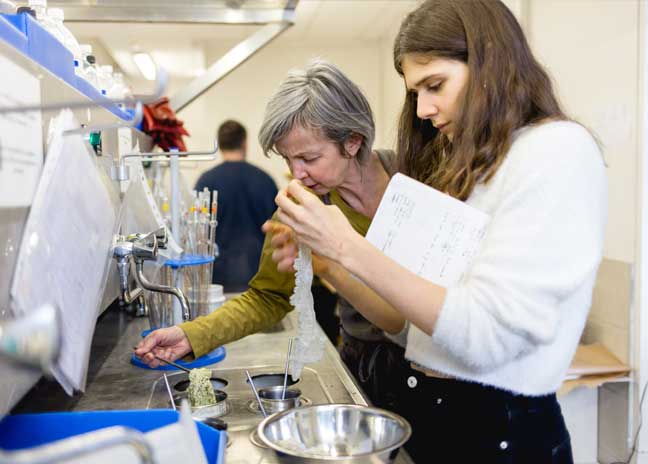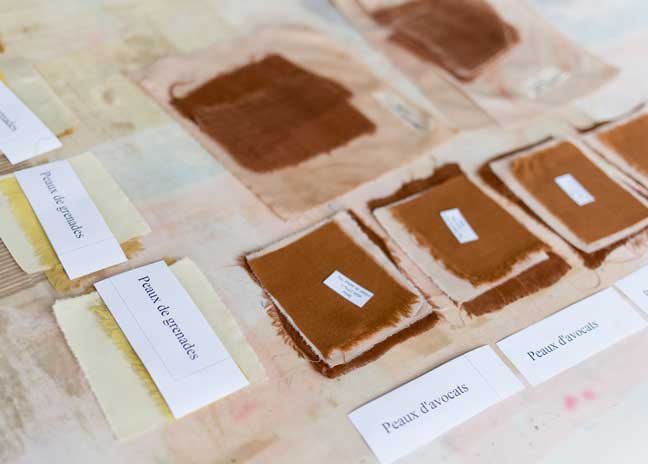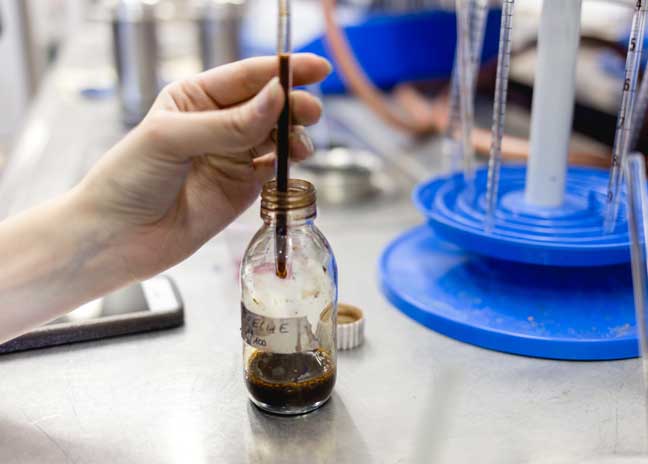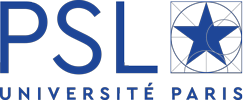EnaMoMa students learn about eco-design and 100% natural colors
From hand-made clothing to haute couture, workwear and accessories, EnaMoMa, Ecole Nationale de Mode et Matière by PSL, trains fashion designers at the Master's level. Focus is on the workshop "natural dyes," introducing students to the techniques and practices of eco-design.
Completely new in the landscape of fashion schools, EnaMoMa by PSL is the result of the collaboration of three institutions of Université PSL: EnsAD, MINES ParisTech and Université Paris-Dauphine. The Fashion school offers students a complete training in marketing, craft fashion, creation, materials and manufacturing processes, as well as a schedule of workshops throughout the year.
"The workshops are like breaks in the busy schedule of EnaMoMa. By experimenting with innovation but also techniques of craftsmanship, students nurture their creativity in diametrically opposed segments, however firmly anchored in our time. Collaborative projects with students are also an extraordinary source of inspiration to feed their Grand Projet collection at the end of the Master's degree" explains Laurence Piette, in charge of prefiguring EnaMoMa by PSL.
The last workshop, a week of introduction to eco-design through the manipulation and production of "natural dyes", offers a great opportunity to discover this new program.

Autonomy and craftsmanship
In nature, we can create dye from anything: food waste, roots, or coffee grounds and produce a wide range of colors, contrary to some conventional wisdom
"In nature, we can create dye from anything: food waste, roots, or coffee grounds and produce a wide range of colors, contrary to some conventional wisdom" explains Isabelle Rodier, Textile Design teacher at EnsAD and facilitator of the workshop. Throughout the week, students will learn about the potential of natural materials to maximize their fields of expertise and degree of autonomy. "Natural dyes are not intended to serve the mass market. We would not succeed and it would be absurd to spend so much agricultural land to dress. It is nevertheless essential that students know how to assemble an indigo tank, make a color chart and achieve an etching (fixing the dye on a textile) with these materials. These techniques are certainly more expensive and take longer than chemical dyes, but they result in a particular effect. It's an artisanal knowledge and there are different ways to innovate : this workshop is made to inspire people! " says Isabelle Rodier.

The future of Fashion
The future of fashion lies for me, in innovation and the search for new technologies. Manufacturing processes, new materials, 3D printing: all this will have an impact on the garment.
To make their natural color swatches and produce the shade they want, students manipulate textiles, dyes and tank temperatures. "I reactivate all my background about chemistry from high school" says Antoine Emmanuel, a former student of ENSAV La Cambre in Brussels, while preparating dyes. A learning by doing that seems essential to him, because although he is not sure to turn towards eco-design, he is interested in its innovating dimension: "The future of the fashion resides for me in the innovation and the search for new technologies. Manufacturing processes, new materials, 3D printing: all this will have an impact on clothing, whether it is luxury clothing or everyday clothing; and that's why I chose to specialize in EnaMoMa after my Bachelor's degree."
Noémie, a graduate of the Duperré school in Paris, who worked as a textile designer after her studies, claims that knowing how to handle and produce her own dyes is a precious asset: "I am convinced that we will have no choice. We will have to make it clear that we consume more efficiently. I am fully aware that fashion is an industry, and our courses at Paris-Dauphine University helped us understand the mechanisms. I think a form of craftsmanship can exist alongside famous brands or big textile chains. It is a positioning that must be thought out, but there's room for it. I hope I can start working for others, then build my project in parallel. "
We worked as a team of designers, creatives, engineers with the challenge of inventing a fully eco-friendly jacket. It was exciting to work with so many different professions.
The workshops are also an opportunity for students to confront other environments and trades. The previous workshop organized at MINES ParisTech around eco-design brought together a start-up, engineering students and students from EnaMoMa. "We worked as a team of designers, creatives, engineers with the challenge of inventing a fully eco-friendly jacket. It was exciting to work with so many different professions. I hope to work with more engineers and this workshop allowed me to become fully aware of the possibilities" says Olympe, also a graduate of the Duperré school in Paris.
Future craftsmen, designers in haute couture and accessories ... The students of the first class of EnaMoMa have multiple ambitions. Next year, they will focus on their personal project based on the lessons from the different workshops.

